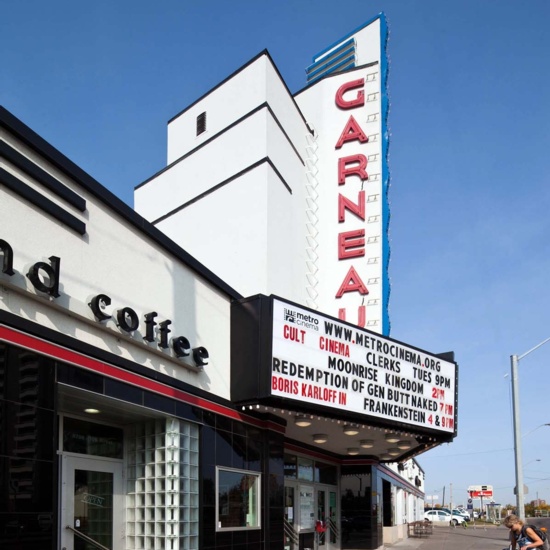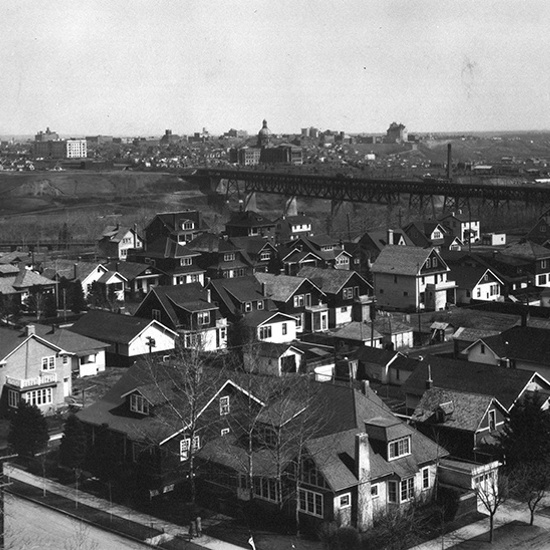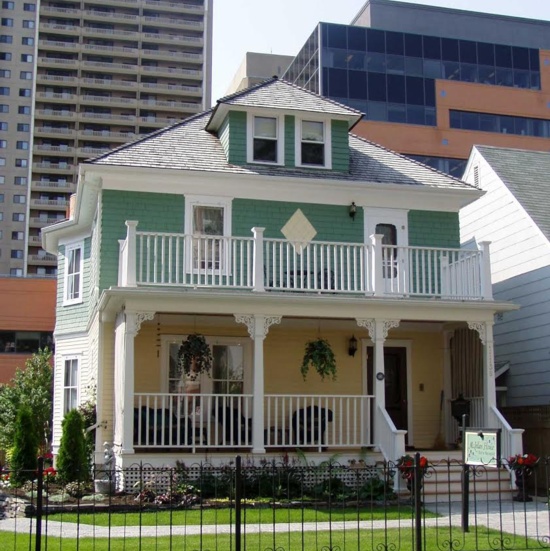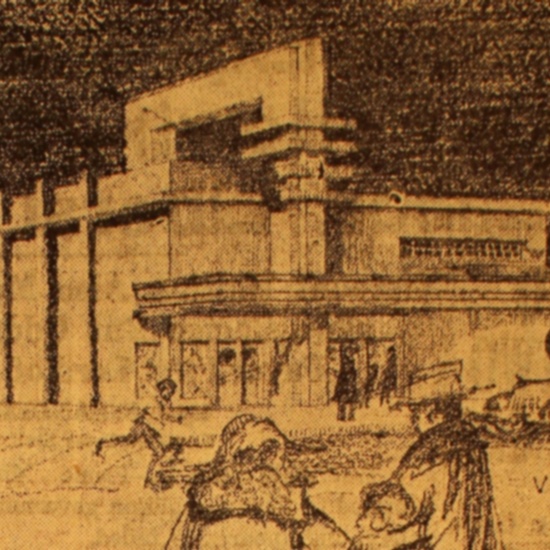Garneau
Dr. Lewis Gwynne Thomas calls the community of Garneau “an outdoor museum of early twentieth-century west Canadian architecture… containing some of the best examples of vintage architecture to be found anywhere in the city.”
Dr. Lewis Gwynne Thomas calls the community of Garneau “an outdoor museum of early twentieth-century west Canadian architecture… containing some of the best examples of vintage architecture to be found anywhere in the city.”
This area’s first residents, for whom the community was named, were Laurent and Eleanor Garneau and their nine children. In 1874, when Edmonton had just 100 citizens, the Garneaus settled on what would become River Lot 7, south of the North Saskatchewan River to what is now University Avenue, between 109 Street and 112 Avenue. The family built a cabin, farmed the land, and planted a Manitoba Maple tree that still stands at 111 Street and Saskatchewan Drive. Laurent Garneau began to subdivide his property in 1891. In 1901 the Garneaus moved to St. Paul, Alberta. The land became particularly desirable for faculty when the University of Alberta was established in 1908 on River Lot 5 bordering Garneau’s property. However, the district that was then called ‘The Garneau’ remained relatively distant from the rapid growth of both Strathcona and Edmonton until the end of the economic boom of 1911.
Faculty member Dr. Henry Marshall Tory purchased substantial title to many sites east of campus in Garneau, and U of A founder Alexander Cameron Rutherford’s Jacobian style brick house still stands in situ, a remnant of the most prestigious part of the community. When the High Level Bridge was completed in 1913, Garneau residents suddenly had access to the whole city by foot, public transit, and streetcar. Residential development, however, was slow due to a recession and the First World War, but the families in Garneau - many of whom were university staff, civil servants, and businessmen - seemed to endure the hard times modestly well. After 1921, heritage homes made way for bungalows and semi-bungalows as styles leaned more toward ease of management and care.
The red brick Garneau School was completed in 1924, the same year the Garneau Community League was established. By the mid-1930s virtually the whole district was developed from 106 to 112 Street and from the North Saskatchewan River to University Avenue.
Unprecedented growth following the Second World War prompted the city to reclassify nearby developments from single-family to high-density dwelling spaces. Many homes in Garneau were converted to rooming houses, and the now large student population frequented the newly established 109 Street commercial district and the Garneau Theatre - an example of local modernism designed by architect William G. Blakey in 1940. By 1959, unhindered by municipal zoning regulations, the University of Alberta set its eyes on expropriating nearby land and houses to accommodate student housing, academic buildings, and parking lots.
Local residents unsuccessfully fought the university’s expansion through media campaigns, market strategies, court action, and careful identification of heritage homes. Even though student enrolment didn’t materialize as projected, the university annexed fifty-three acres of land and tore down many homes. Emily Murphy’s two-storey balloon framed white clapboard house was spared and Rutherford’s residence narrowly escaped the wrecking ball. In 1963, Garneau Towers was erected, the area’s first high-rise.
The community currently consists of single-family homes primarily in the southwest; and walk-ups, row-housing, and family oriented residential development to the southeast. Transit and LRT development, low-rise apartments, and high-rises are found mostly in the northeast and along the top of the river valley; while high-density apartments and commercial development rise along 112 Street. Provincial legislation still exempts the University of Alberta from municipal and building regulations. The community showcases a broad range of styles and designs from Foursquare, Arts and Crafts, Dutch Colonial Revival, Craftsman, Storybook Cottage, Modern Bungalow, Prairie, to Eclectic Edwardian. The challenge to keep Garneau intact continues.
Details
Sub Division Date
TBA
Structures
Cecil Burgess Residence
Dr. Eardley Allin Residence
Emily Murphy Residence
Garneau Theatre
R. W. McKinnell Residence
Rutherford House
Sarah McLellan Residence
St. Joseph's Hospital
Varscona Theatre
Architects
William G. Blakey
Gordon Wynn
Peter Rule
John Rule
George Heath Macdonald
Unknown
Hand & Blackstead
Architectural Styles
Art Deco influences
Arts and Crafts
Craftsman
Foursquare
Moderne
Scottish Baronial
Tudor Revival









